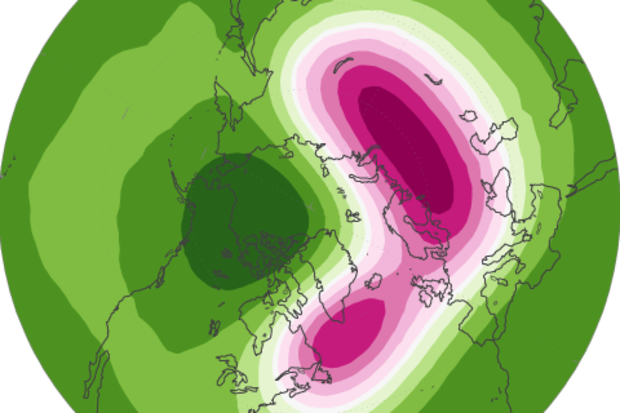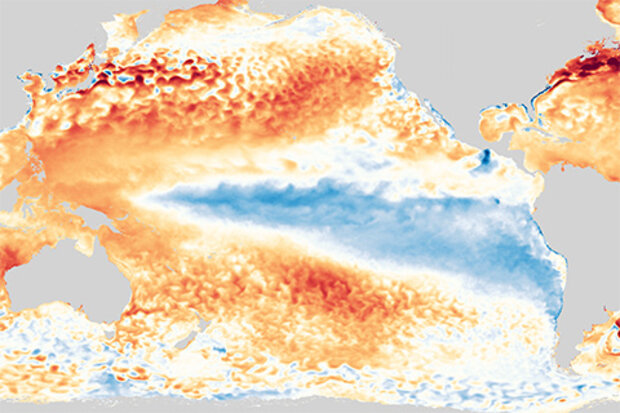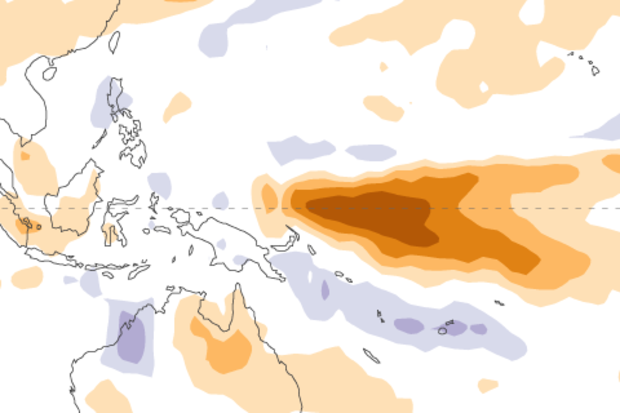ENSO Blog
La Niña is still here, but forecasters estimate about a 60% chance that neutral conditions will return this spring. By the fall, the chance that La Niña will return is approximately equal to the chance that it will not. Let’s take a stroll around ENSO’s eclectic bookshelf and see what we can learn
Romance novels
The temperature of the ocean surface in the Niño 3.4 region of the tropical Pacific, our primary El Niño/Southern Oscillation (ENSO) measurement, was just about 1.0°C (1.9°F) below the long-term average in January, according to the ERSSTv5 dataset. As of this month, the long-term average is calculated over 1991–2020. (More on this page-turner later!)
Of course, ENSO woul…
Read article
The POLAR VORTEX is coming!!!!! That’s the ALL CAPS message these days in various news articles thanks due to the sudden stratospheric warming that occurred on January 5, 2021. We’re going to take a deeper look at the polar vortex and possible interactions with our ongoing La Niña. But, to recap previous articles on this blog:
— The Polar Vortex doesn’t just appear randomly. The polar vortexes (more than one!) are a regular feature in the atmosphere, spinning away around the poles in both the Northern and Southern Hemispheres.
— There is the stratospheric polar vortex, which is located in the layer that is 5-30 miles above Earth’s surface and only ap…
Read article
There’s a 95% chance that La Niña will continue through the winter and a 55% chance the tropical Pacific will transition to neutral conditions by the spring. After that, the picture is less clear. Certainly less clear than the waters of the tropical Pacific...
Tahiti
Speaking of, let’s take the temperature of the tropical Pacific Ocean. The December 2020 average sea surface temperature in our primary monitoring region, Niño 3.4, was 1.2° Celsius (2.16˚ Fahrenheit) cooler than the long-term (1986-2015) average, according to the ERSSTv5 dataset. This is comfortably within the La Niña boundary of more than 0.5°C cooler than average.
The cooler-than-average wedge of La Niña is clear in …
Read article
Here at the ENSO Blog we’ve explored the effects of El Niño and La Niña on Australia, South America, Africa, India, and the northern Pacific and Atlantic Oceans. Our posts about North American impacts are too many to list—check out the index page to see some of those. We’ve even visited the Arctic! Today, we’ll add the fifth-largest continent, a vast, ice-covered disc at the bottom of the world, surrounded by a roaring ocean.
Keep going south until you’re going north
Antarctica is about as close to being on another planet as you can get while still on Earth. Its 5.5 million square miles have been covered in ice for 35 million years, the average summer (December–February) temperature at…
Read article
La Niña continued to gain strength in November as we approach the normal peak for these events in the Northern Hemisphere winter—usually November–January. Forecasters estimate at least a 95% chance that La Niña will last through the winter, with a potential transition to ENSO-Neutral during spring 2021 (~50% chance).
La Niña sticks out like a sore thumb when taking a gander at a map of sea surface temperature anomalies (the difference from the long-term average) over the Pacific Ocean. The Niño3.4 region of the tropical Pacific (the area we look at for determining ENSO status) was much cooler than the La Niña threshold of -0.5°C, at -1.4°C below average for November according to the ERSST…
Read article




